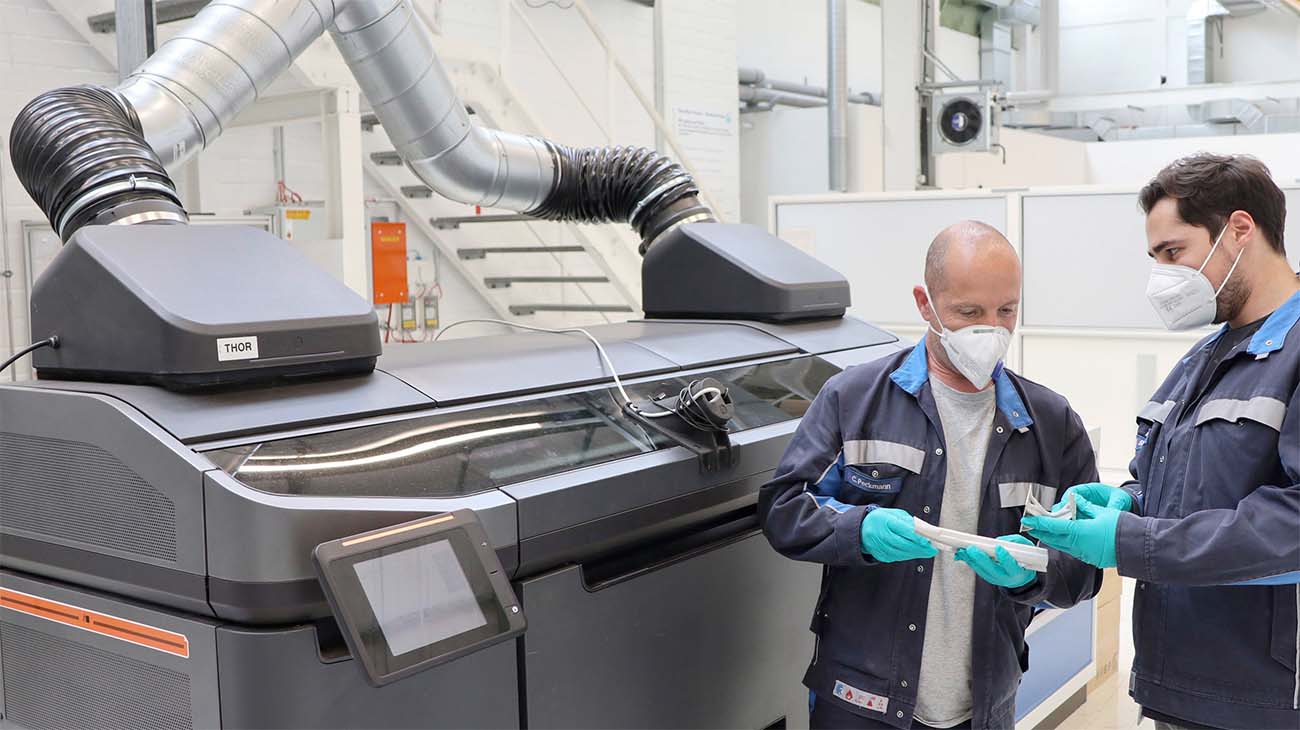German automaker Volkswagen has increasingly relied on 3D printing in recent years. Volkswagen depends on partners such as Siemens and HP. For the first time, the company is now also using binder jetting technology.
For the first time, Volkswagen is using the so-called binder jetting process in parts production at its main plant in Wolfsburg. Unlike most other metallic 3D printing processes, the component is not built layer by layer with a laser from metallic powder, but glue is used in the binder jetting process. Then the resulting component is heated and formed into a metal part.
According to Volkswagen, the binder jetting process reduces costs and increases productivity—for example, parts are only half as heavy as with sheet steel. According to its own information, Volkswagen is currently the only car manufacturer that implements the full production process of this 3D printing technology.
“We are constantly pushing our future topics – even in the constantly challenging environment of the coronavirus pandemic,” says Christian Vollmer, a member of the production and logistics management board for passenger car company Volkswagen. With our partners, we want 3D printing to be more efficient in the coming years and to have it ready for use in chain production.”
Cedric Nike, Siemens AG Board Member and CEO, Digital Industries: “We are very proud to support Volkswagen with our innovative 3D printing solutions. Our automation and software solutions are a leader in industrial production. With this technology, Volkswagen can develop and produce critical components faster, more flexibly, and in a way that conserve resources.”
In the past five years, Volkswagen has invested an amount in the double-digit €1 million range to boost innovation. In addition, the company has entered into a software partnership with Siemens, and the existing collaboration with printer manufacturer HP Inc. has also been expanded. Along with the first full use of binder jetting, important experience must be gained, such as determining which components are to be manufactured economically and quickly in the future. And how additive manufacturing can support the digital transformation of production at Volkswagen.
HP provides the corresponding high-tech printers, and Siemens provides special software for the manufacture of additives. An important process step – jointly expanded by Siemens and VW – is to optimize the placement of components in the installation space. In so-called “overlap”, up to twice the number of parts can be produced per print run.
The three companies want to create a joint team of experts around the Wolfsburg 3D printing center from the summer. The ultra-modern center started at the end of 2018 and enables the production of complex composite parts using 3D printing. The facility is also training staff to use these technologies.
Up to 100,000 parts per year will be produced for VW using 3D printing in Wolfsburg by 2025. The first components of the Osnabrück-documented jetting process will be certified: A-shaft parts in the convertible T-Roc.
These parts weigh about 50 percent less than traditional steel parts. It is precisely these savings that make the process particularly interesting in automobile production. Volkswagen has already successfully tested 3D-printed metal components for vehicles. Production in larger numbers was not economical enough – thanks to new technology and closed cooperation, use in serial production is economically feasible.
Already a million pieces printed in 25 years
Volkswagen has been working with 3D printing for 25 years – and it originally started in technology development with the goal of accelerating the development of vehicles and making them more cost-effective. Today, 13 systems are operated at the Wolfsburg site, which can produce plastic and metal components using various printing processes. Typical examples are the plastic components of prototypes such as center consoles, door panels and instrument panels right down to the fenders. In metallic printing, suction tubes, heat sinks, holders, and conveyor parts are printed, among other things. In the past 25 years, more than one million components have been manufactured.
The collaboration with Siemens is part of a comprehensive strategic partnership in the field of digital production platforms that the two companies have entered into.
The article is based on a press release from Volkswagen.
Subscribe to 3Print.com’s weekly newsletter. Every Monday we send out the most important articles and updates for the week. Subscribe now for free.
Did you find an error? Or suggestions and additions? Please send us a message.

“Certified tv guru. Reader. Professional writer. Avid introvert. Extreme pop culture buff.”






More Stories
AI-powered traffic lights are now being tested in this city in Baden-Württemberg.
The use of artificial intelligence in companies has quadrupled
AI Startup: Here Are Eight Startup Ideas